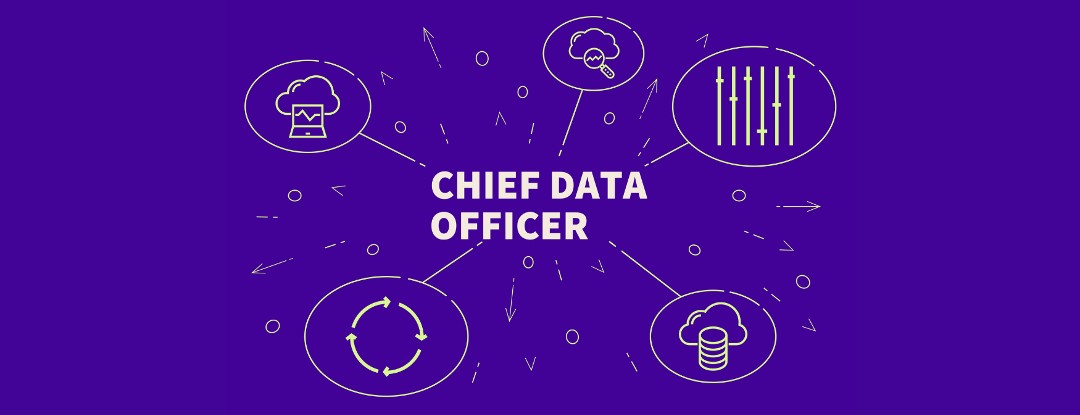Data is now a vital enterprise asset, just as money or human resources. Data-based decisions are integral to most of the digitised work processes and new technologies. The high stakes associated with data have raised the importance of data management. Until recently, the CIO or the IT team managed data. Of late, several enterprises have appointed a Chief Data Officer (CDO) to oversee data-related functions.
The role of the Chief Data Officer differs from the Chief Information Officer (CIO), a Chief Technology Officer (CTO), or even a specialised Chief Digital Information Officer. The CIO’s role is more aligned with that of a Chief Analytics Officer. Many enterprises have an integrated chief data and analytics officer (CDAO) role.
Unlike the tech-centric role of the CIO, the CDO has more of a business role. The CIO manages the infrastructure and information systems that process and manage data. The CDO manages the availability, integrity, and usability of the data. They decide how the enterprise captures and uses data by creating an enterprise-wide data strategy. CDO responsibilities include data governance, data management, data quality, and data analytics. Through these efforts, the CDO strives to deliver the desired business result and maximise the value of data as an enterprise asset.
CDOs become effective when they collaborate with the business team. They collaborate closely with the CIO and the CTO, and also the marketing, operations, R&D, and product teams.
1. Monitoring enterprise data
CIOs, CTOs, and other IT leaders juggle many hats. They cannot afford to give data management the attention it deserves. But CDOs can focus their energies on managing data. Often, enterprises suffer from data mismanagement. As the enterprise grows organically, they end up with different types of databases and storage systems.
A good part of the data remains trapped in silos. Users and even data scientists are not aware of the data assets held by the enterprise. Data governance is poor, and the data pipeline visibility remains impaired. Such opaqueness leads to errors and delays in data processing and erodes the trust in data. Decision-makers who do not have access to reliable data make assumptions, guesswork, and probabilities. These are recipes for disasters in today’s data-driven hyper-competitive world. Rectification creates unplanned work and distracts the workforce from their targets.
The CDO oversees enterprise data to pre-empt errors and delays. The CDO ensures the integrity, quality, and efficiency of the data pipeline by:
- Laying down and enforcing data standards and policies.
- Adherence to regulations data to minimise reputational risk. For instance, they ensure compliance with the stringent EU GDPR and save the enterprise from costly fines or other actions.
- Securing data against cyber attacks. The onus of cyber security infrastructure lies more with the CIO or the CTO. CDOs have a critical role in establishing data safeguards and implementing data governance.
[Read: Five ways CDOs get data governance right.]
2. Enabling data availability and usability
Competitive advantages stem from the efficient use of data. An analytics-driven business culture makes data-driven discussions regarding business opportunities and threats. But Big Data leads to information overload, with most enterprises overwhelmed by the quantum of data. They face difficulty in sorting relevant data from junk data, and processing real-time data for live analytics.
Business agility depends on analytics cycle time. Decision-makers need live information to respond to competitive opportunities and threats. Impatient customers go elsewhere if they encounter delays. Businesses with the shortest analytics cycle time take faster decisions and become more nimble. They gain a huge competitive advantage in today’s fast-paced world.

The best CDOs create a strategy for using analytics across the enterprise. They:
- Oversees the enterprise data strategy and vision, and communicates the same to all stakeholders, in a way they understand the nuances.
- Embed analytics into the enterprise workings. They ensure decision-makers at all levels have access to analytical insights.
- Apply analytics best practices to ensure data integrity, identify relevant data and reduce cycle time.
- Create systems to use analytical insights to understand the mind of the customers and generate real ROI from data.
- Enable agile analytics. Agile analytics seek value in datasets through a free-form adaptive approach. The conventional analytical approach works on predetermined objectives and has a rigid structure. The agile analytical approach is flexible and adapts to specific enterprise needs that change over time.
3. Heralding transformative change
Successful CDOs power digital transformation and promote a data-driven culture.
CDOs strive for change and promote a data-driven work culture by demystifying data at the functional level. They have a bird’s-eye view of enterprise data and share these unique insights to relevant stakeholders.
The success of the CDO lies in convincing business leaders, the rank-and-file workforce, and other stakeholders on how the data strategy affects the bottom line. The bottom line impact comes through additional revenue streams, improvement in business processes, speeding up time to market, or providing personalised service to customers.
A NewVantage Partners survey reveals that 51% of executives at Fortune 1000 firms believe a successful CDO should be an external change agent with fresh perspectives. The onus is on the CDO to use data to power digital transformation, reduce costs, and increase revenues. The most effective CDOs:
- Quantify the value and impact of data. They attribute the ROI of data initiatives to customer satisfaction, revenue, and operations efficiencies.
- Articulate the value and insights derived from data to all stakeholders. They especially convince business leaders and the workforce how analytics improve decision making.
- Build foundational data and analytics competencies among the rank-and-file workforce.
- Encourage creative uses of analytical insights to drive innovation.
Businesses are going through flux, and CDO responsibilities remain a moving target. Effective CDOs consider the larger organisational picture, in the same way, the CFO considers the business perspective when preparing the budget.
A 2021 Gartner survey reveals less than 50% of large enterprises have a chief data officer (CDO). But as more and more businesses seek a data-driven culture where data and analytics drive decision making, the role of the CDO is becoming more critical than ever before.












